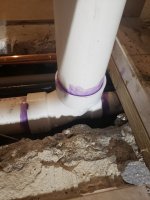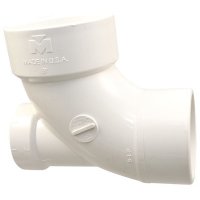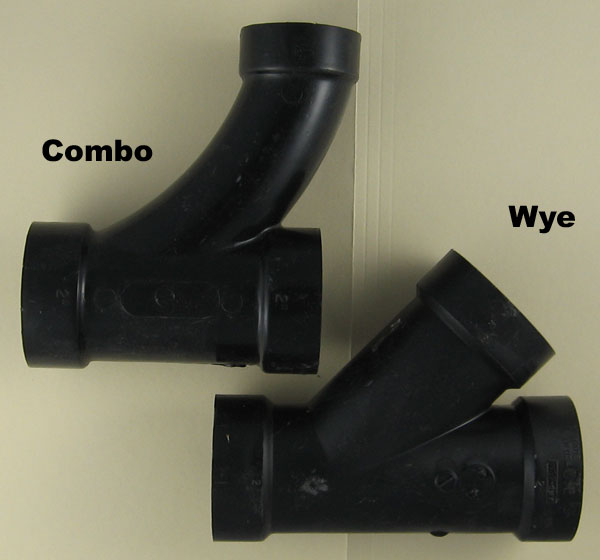Hey everyone,
Hope you guys here can help because I don't have faith in my contractors plumbing skills. He's tried to use sanitary tees horizontal, told me to vent out the bottom of the outside wall for a kitchen island sink, never heard of a island loop ven, and handful of other other things that he said "I've been doing this for years and never had a problem". I told him I don't care if that is how you do it, I want it done correctly.
With that being said here at the photos.


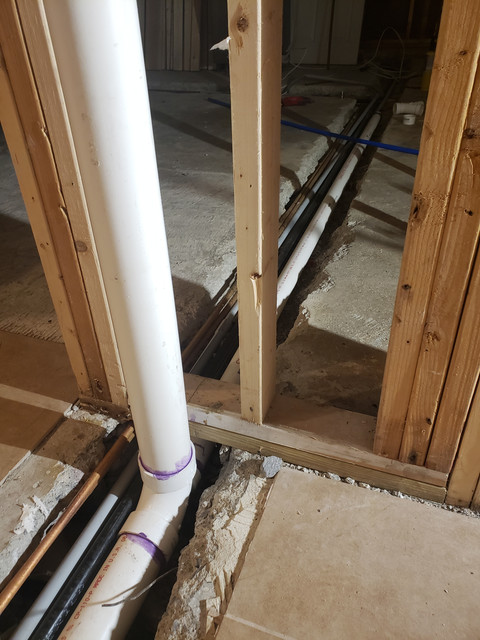







We are remodeling our first floor and had to move the 2nd floor main drain. The second floor has two full bathtooms and laundry. The new kitchen ties into the main drop at the back of the 90° elbow as a low heel inlet, it is a 3x3x2. From what I found online that fitting should have the 2" side pointing up for a vent, not sideways for the kitchen to drain into.
The original main drain turned 90° went between the joist and dropped straight down to the main drain. The vent attached to the side of the elbow of the toilet flange.
What fitting or way should this be plumbed in to meet code?
Thank you in advance for your help!
Matthew
Hope you guys here can help because I don't have faith in my contractors plumbing skills. He's tried to use sanitary tees horizontal, told me to vent out the bottom of the outside wall for a kitchen island sink, never heard of a island loop ven, and handful of other other things that he said "I've been doing this for years and never had a problem". I told him I don't care if that is how you do it, I want it done correctly.
With that being said here at the photos.










We are remodeling our first floor and had to move the 2nd floor main drain. The second floor has two full bathtooms and laundry. The new kitchen ties into the main drop at the back of the 90° elbow as a low heel inlet, it is a 3x3x2. From what I found online that fitting should have the 2" side pointing up for a vent, not sideways for the kitchen to drain into.
The original main drain turned 90° went between the joist and dropped straight down to the main drain. The vent attached to the side of the elbow of the toilet flange.
What fitting or way should this be plumbed in to meet code?
Thank you in advance for your help!
Matthew
Attachments
-
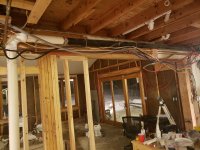 20210206_232144.jpg107.1 KB · Views: 335
20210206_232144.jpg107.1 KB · Views: 335 -
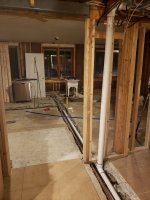 20210206_232755.jpg90.3 KB · Views: 302
20210206_232755.jpg90.3 KB · Views: 302 -
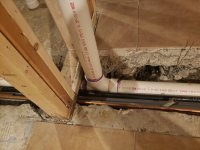 20210206_232052.jpg85 KB · Views: 292
20210206_232052.jpg85 KB · Views: 292 -
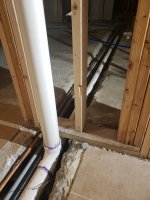 20210207_003927.jpg92.1 KB · Views: 314
20210207_003927.jpg92.1 KB · Views: 314 -
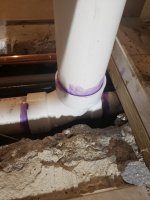 20210207_003741.jpg80.8 KB · Views: 297
20210207_003741.jpg80.8 KB · Views: 297 -
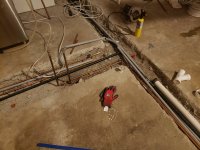 20210206_232358.jpg104.9 KB · Views: 296
20210206_232358.jpg104.9 KB · Views: 296 -
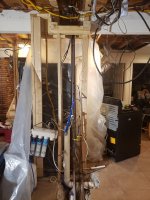 20210207_002653.jpg108.4 KB · Views: 300
20210207_002653.jpg108.4 KB · Views: 300 -
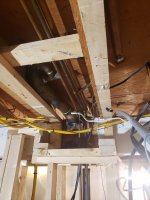 20210207_002747.jpg87.5 KB · Views: 297
20210207_002747.jpg87.5 KB · Views: 297 -
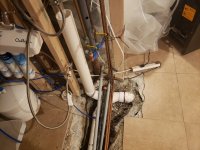 20210206_232256.jpg100.8 KB · Views: 292
20210206_232256.jpg100.8 KB · Views: 292 -
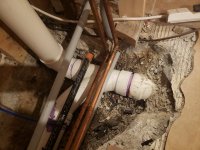 20210206_232315.jpg110 KB · Views: 303
20210206_232315.jpg110 KB · Views: 303

